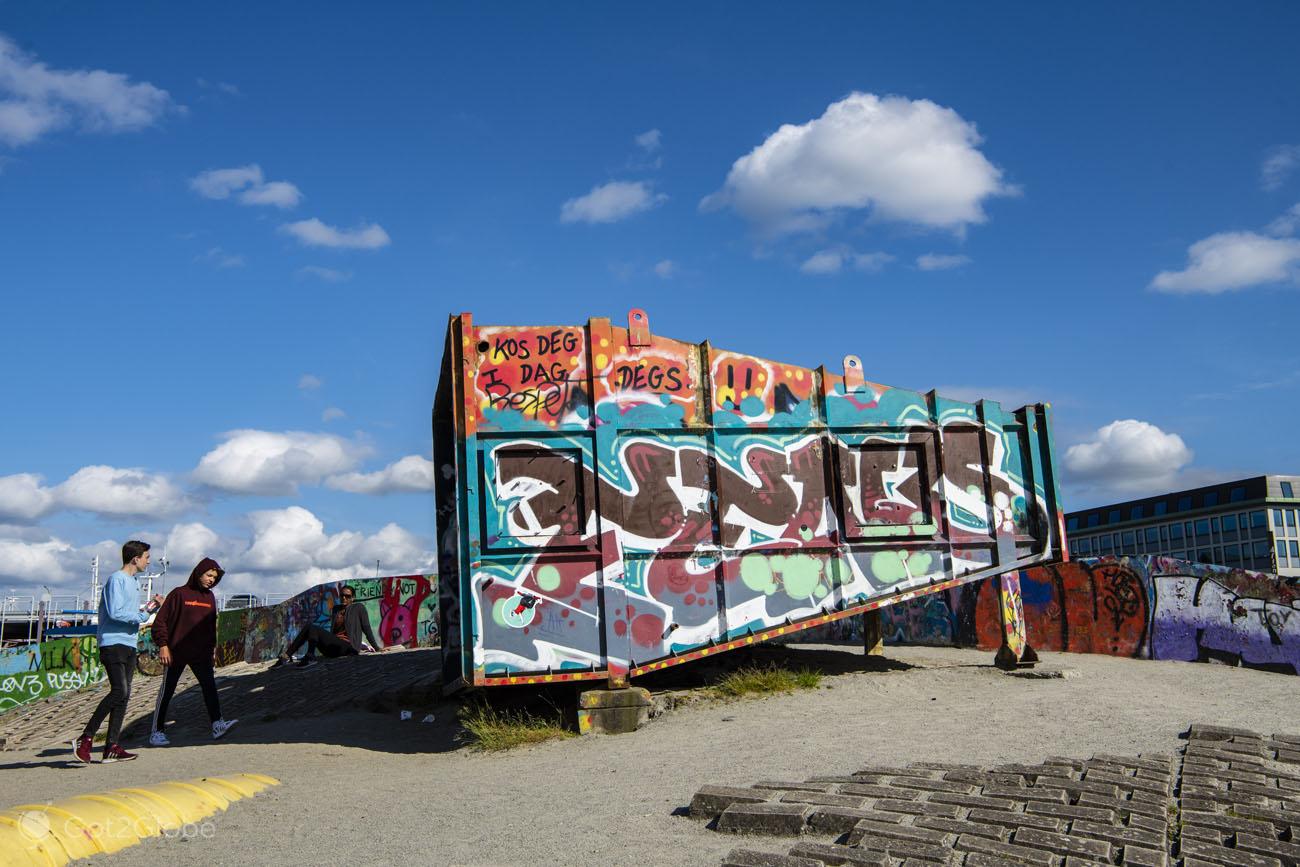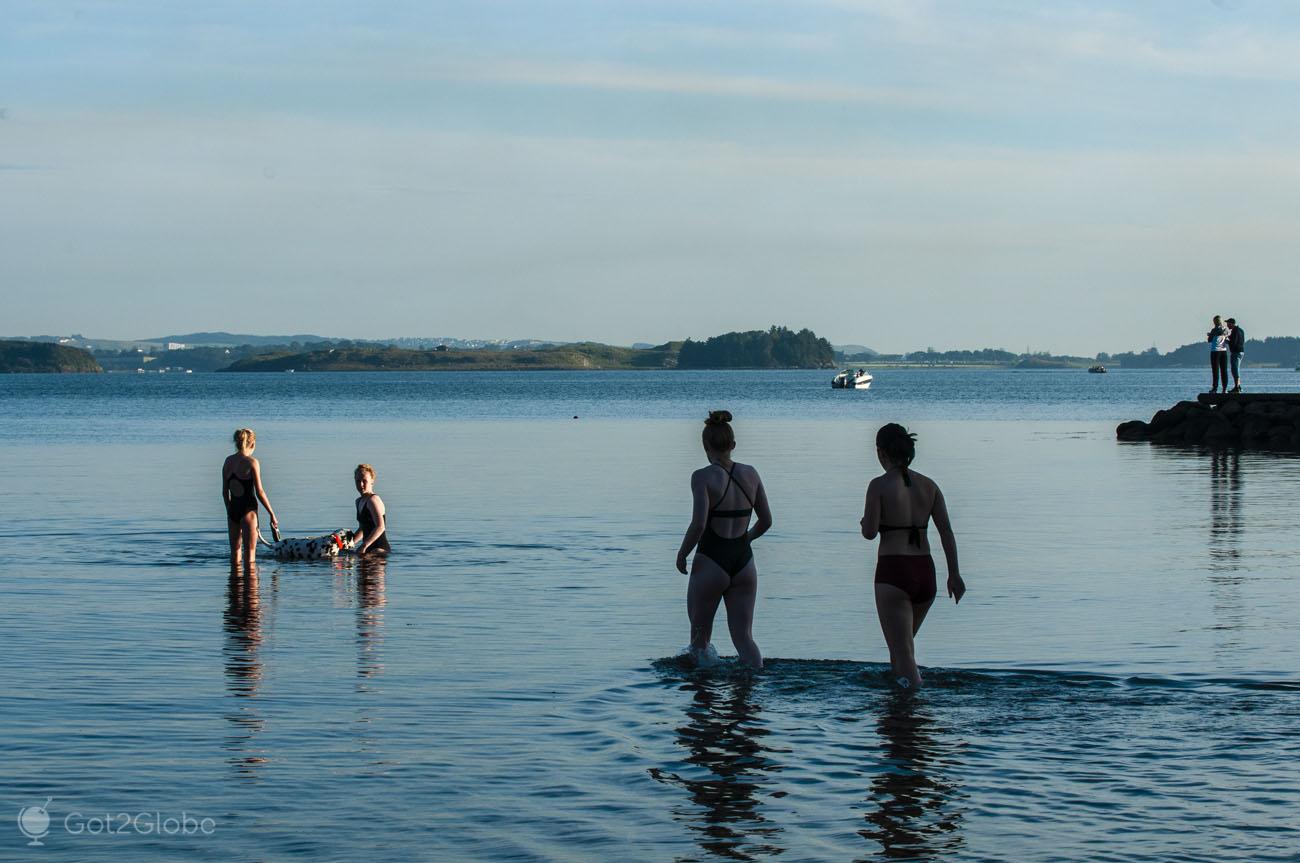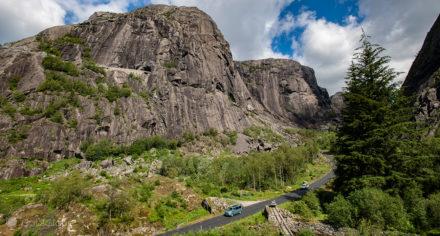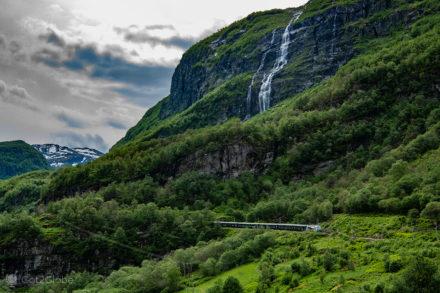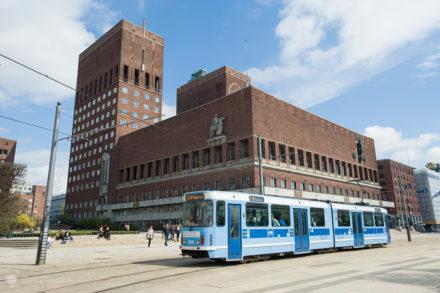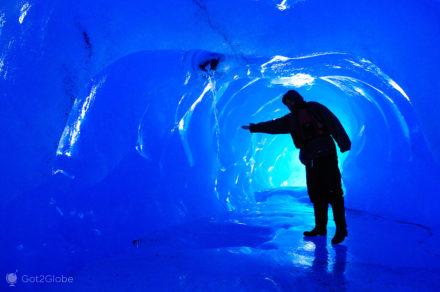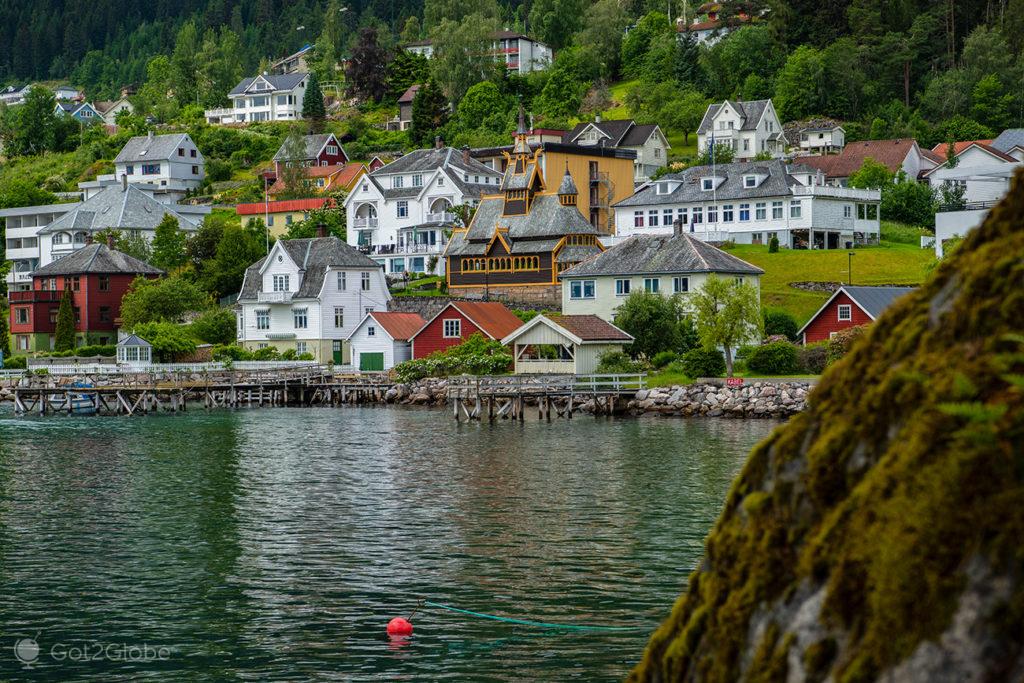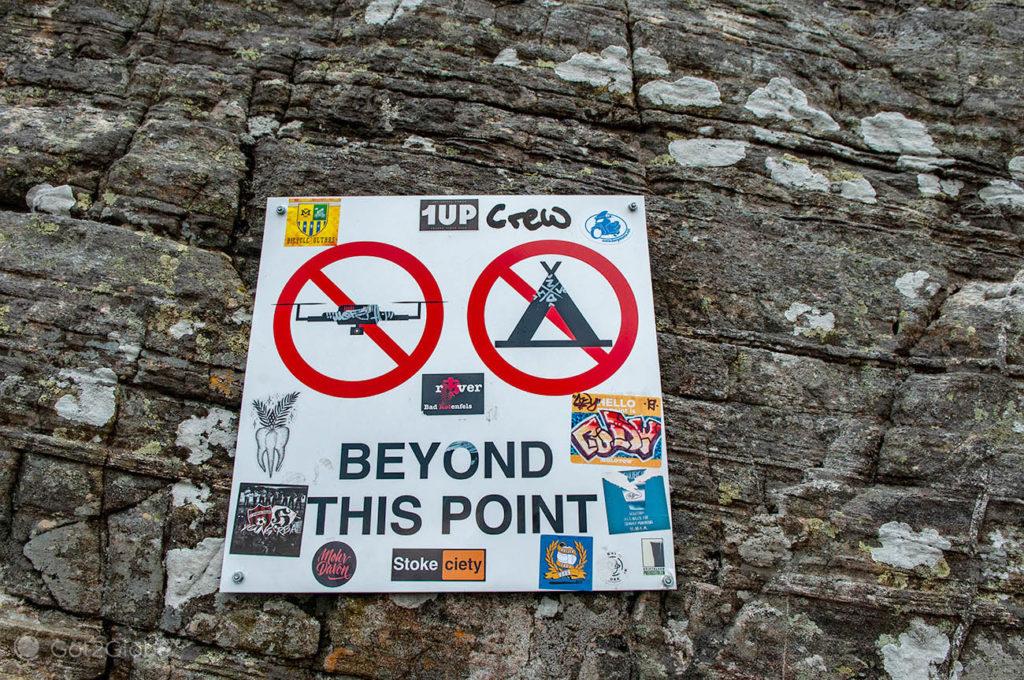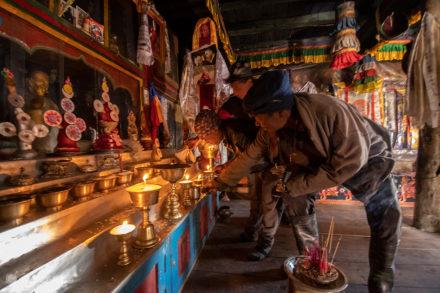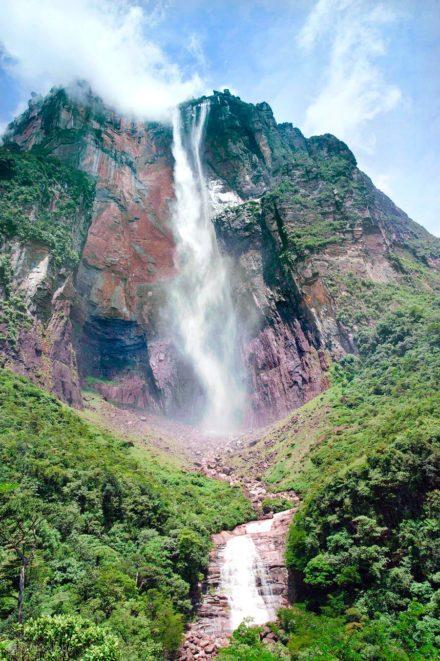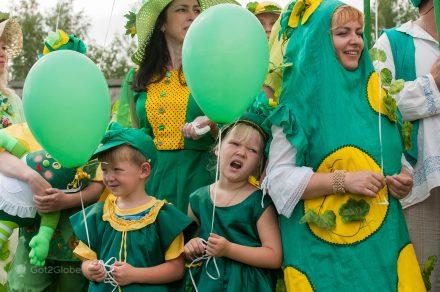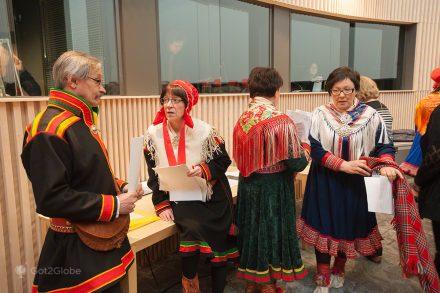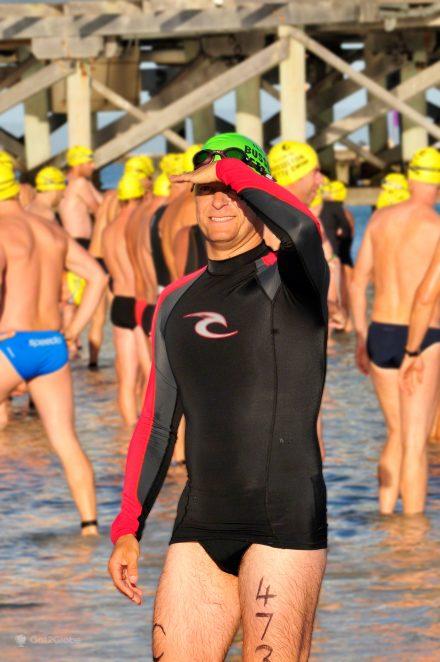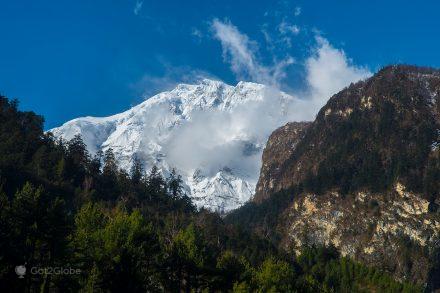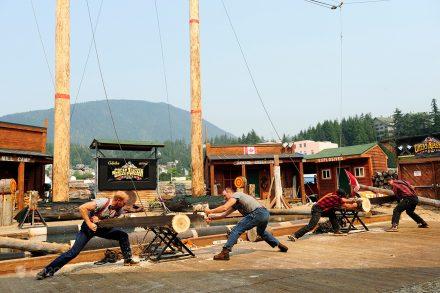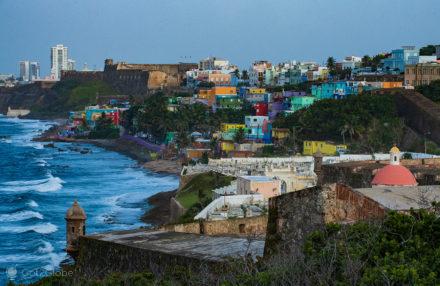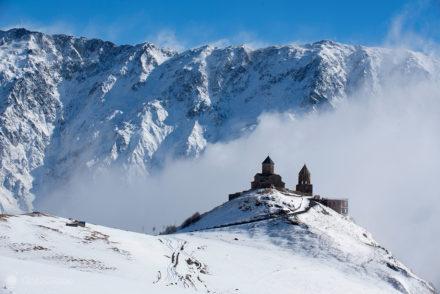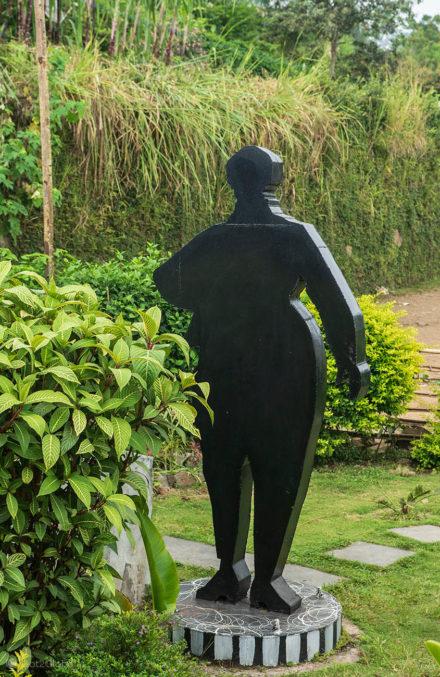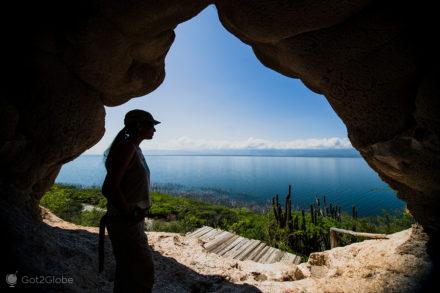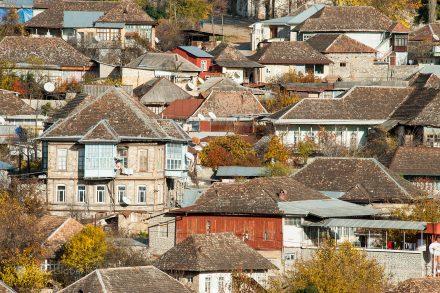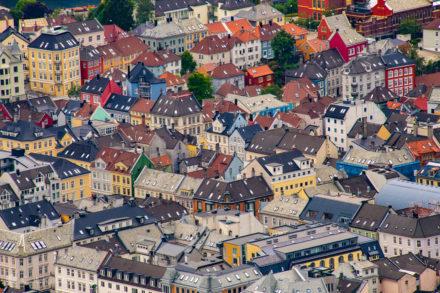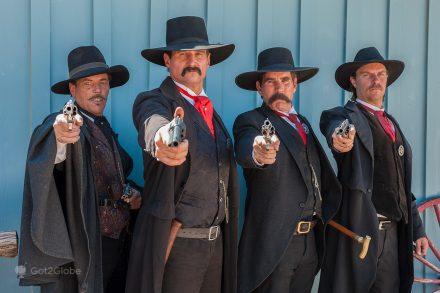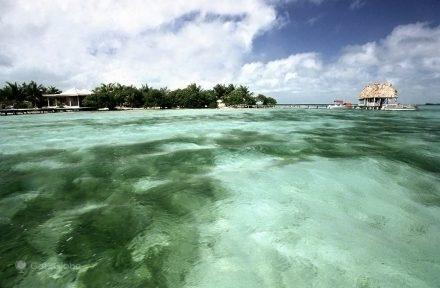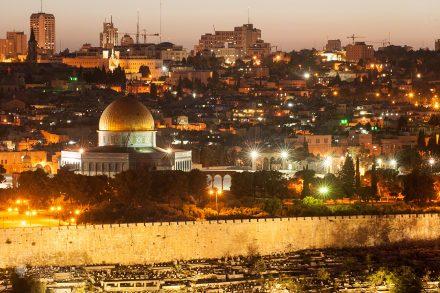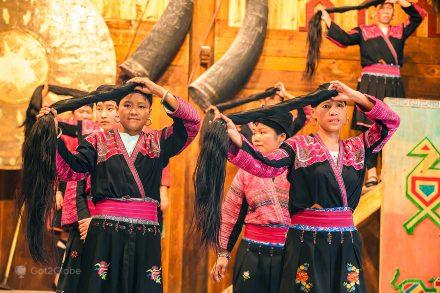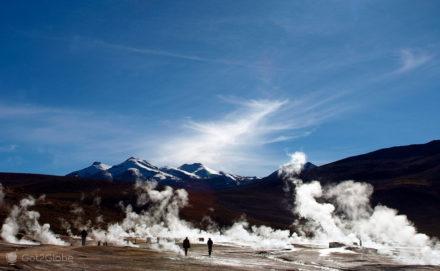The midnight sun is one. Mid-afternoon is another.
Norwegians and foreigners installed on the far side of Vagen port, on the esplanades of the Skagenkaien seafront, absorb the difference in the faces and arms. They convert it into vitamin D and the ever-precious serotonin, as long as the weather permits.
There are few ports that we remember with such an intimate relationship with the cities to which they belong. Vagen's hugs Stavanger so tightly he almost smacks her. The V with which it tightens reveals itself so deep that it almost joins Breiavatnet, the heart-shaped urban lake a few meters to the south.

Historic and colorful houses of Vagen, the port of Stavanger.
As we unveiled them today, these estuary funds appear to be more recreational than commercial. Appearances deceive.
A Legacy of the Profitable Conservation Industry
During the 2002th and XNUMXth centuries, the secular wooden buildings and roofs in A served as warehouses and other structures to support fishing and trade in goods and, from the mid-XNUMXth century onwards, over fifty fish canning companies that disputed the city, until, in XNUMX, the last one was closed.
Even without the vastness of the Vagen de Bergen, the emergence of Stavanger as an unavoidable city of business and leisure, at a certain point, inhabited and frequented by wealthy people, facilitated the conversion of this row of houses, in a colorful succession – much brighter than the buildings from Bergen – from restaurants and bars.
Only the asphalt of the Skagenkaien separated the elegant buildings from the inlet and from the launches and other vessels moored right there. Some of the customers, owners or passengers of the boats, had the luxury of crossing the lane, to and fro, in a convenient and pleasant alternation between socializing with family and friends and one or another to do on board.
On certain nautical ephemeris, docks and moorings become overcrowded. The most exemplary event to date has been the Tall Ships Races of 2018 but, truth be told, it doesn't take that much.
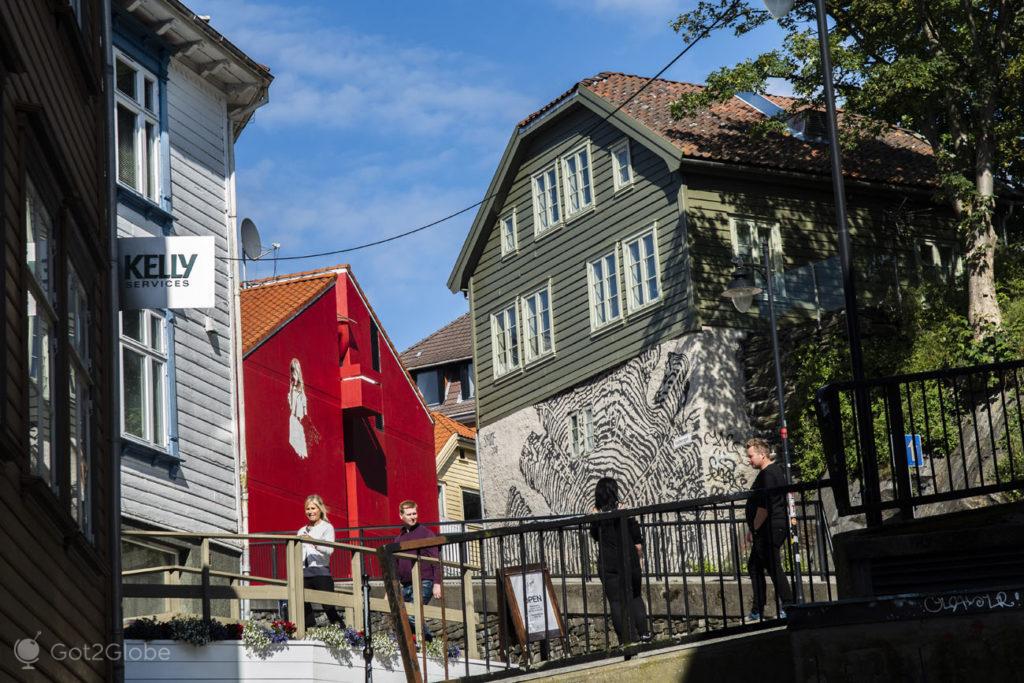
Passersby ascend from Vagen towards Gamle Stavanger, Old Stavanger.
Valbergtarnet and Gamle Stavanger: the City of Other Times
To the east of the Skagenkaien, Stavanger climbs the “highlands” of the Valbergtarnet, an observation tower erected between 1850 and 1853 and permanently inhabited by lookouts charged with alerting the inhabitants in case of fire. These days, the tower houses a museum.
Above all, it serves as a viewpoint over the surrounding urban scene. A few meters to the east, we enter Gamle Stavanger, the oldest district in the city and, according to its tourist authorities, the largest (173) group of historic wooden houses in Europe.
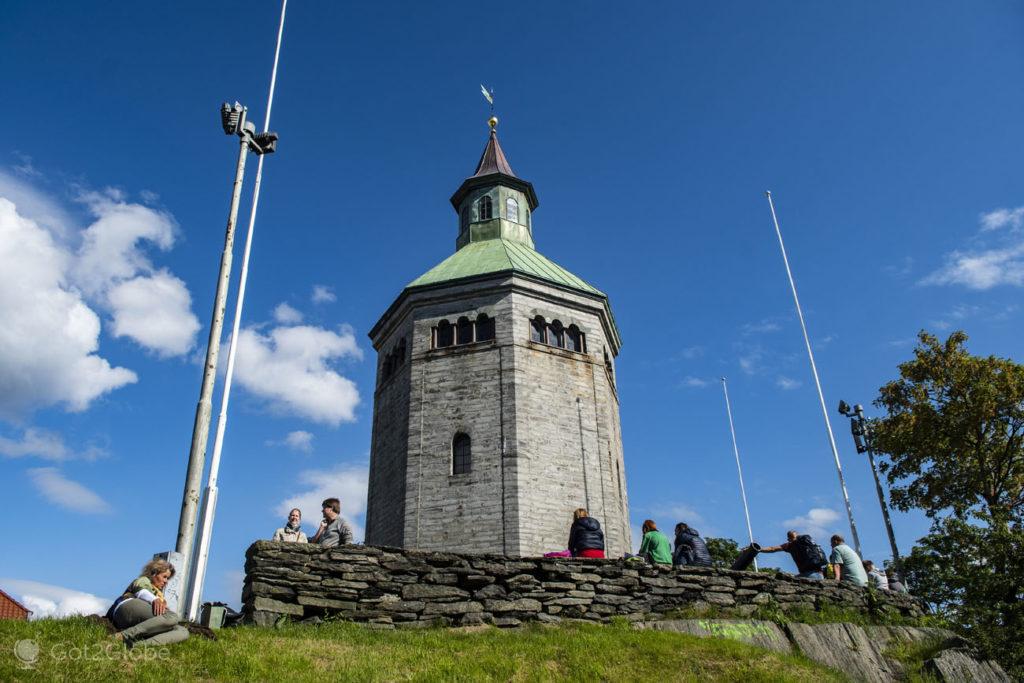
The Valbergtarnet observation tower, formerly used to control maritime traffic entering and leaving the port.
From 1800, with the emergence of the canning industry, hundreds of fishermen and other workers from the surroundings flocked to Stavanger. Some literally arrived with their houses on their backs. Made mostly of wood, the homes were easy to dismantle and transport on multiple trips in rowboats.
Before the dawn of oil exploration, Stavanger was the Capital of Canned Sardines, to be more scientific about Sprats (sprattus sprattus) canned, a species of the herring family then considered one of the tastiest and whose fishing and canning, in pepper sauce or jalapeno, from tomatoes and in olive oil, came to guarantee the livelihood of about half of the city's population.
Gamle's restoration turned out to be reliable except for the color. At the origin, these houses were almost all painted red or yellow, not by a fashion statement of the time or social affirmation. White paint was by far the most expensive.
Even employed, humble families could not afford to buy the Norwegian color of sumptuousness.
Gamle Stavanger's Salvation on the Tangent
In the aftermath of World War II, Gamle's homes had fallen into disrepair. They formed a devalued and ill-regarded zone. An overly radical plan stipulated that they should be razed to the ground, replaced by modern concrete structures.
This plan was only aborted due to the determined opposition of Einar Hedén, the city's architect, who managed to convince the Stavanger Council to save and enhance its historic core.
In recent years, Stavanger has given in to other cans. As we walk through its streets and alleys, we come across murals painted by graffiti artists with a mind full of surreal images and full of talent to illustrate them.
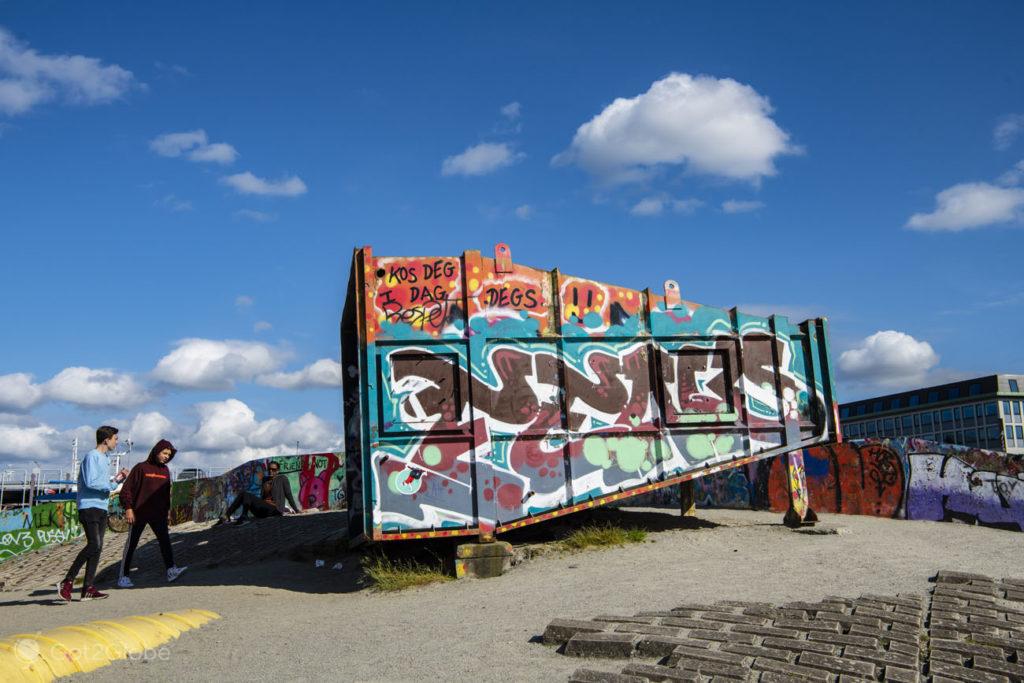
Friends pass by a decorative Geoparken container.
In one of them, the Ovre Holmegate, the murals are replaced by mere color. For some time now, this street, somewhat removed from the Skagenkaien promenade and too similar to the others, received few visitors for the ambitions of business owners.
Dissatisfied, they agreed to paint each of the buildings in distinct, showy colors. The idea made the street one of the most frequented, the most fashionable place for cafes and bars (in addition to an antique shop) in Stavanger.
An Incredible Deposit of Information and History about Black Gold
We walked along it on our way to the city's east coast, looking for the museum dedicated to Stavanger's much more recent and prosperous era, that of Oil and Natural Gas.

Staircase of the Petroleum Museum.
Nearby, we are distracted by the pranks of children and teenagers who share the Geoparken, an amusement park made of a container also with graffiti and an irregular surface suitable for bicycle and skateboard stunts.
Ahead, a futuristic complex of buildings inspired by storage tanks and oil extraction towers just might be what we were looking for. We entered. We circle.
Most of the time intrigued, among the panoply of illustrations, models and models, some explaining the different types of crude, others, the evolution of platforms that allow it to extract prominently into the North Sea offshore.

Section of the hyper-technological Stavanger Petroleum Museum.
The Fossil Wealth the North Sea Gives Norway
It was in this icy and wild sea that, 1969, the US company Phillips Petroleum Company (later part of ConocoPhillips) discovered the Ekofisk, the first of several oil and gas fields that would make Norway a major producer and exporter. of both raw materials.
And in one of the richest countries in the world, if the Gross Domestic Product is taken into account per capita. Stavanger benefited from this discovery like no other Norwegian city.
In 1972, the Norwegian government passed a law in the Stortinget parliament that established the creation of a state-owned company that would enable Norway's direct participation in North Sea oil exploration. Thus was founded StatOil, later renamed Equinor.
Stavanger was selected to host Equinor's headquarters. By symbiosis, several other companies, agencies and institutions linked to oil prospecting settled there. At the center of a multimillion-dollar industrial branch, Stavanger's economy was quick to assume its current dynamism and power.
As mentioned in the entry of this article, in the light of what happened in the oil countries of the Middle East for decades on end, the city could have been satisfied with the great luck that it has been awarded. Instead, it opted to explore another Norwegian lode, tourism. In Stavanger, it is not only at the Petroleum Museum that the two intersect.
Alexander L. Kielland: The Famed Writer, Edil and the Voraz of Stavanger
In another late afternoon, we leave the vertex of Vagen pointing to the park-garden Byparquen that surrounds the lake of Breavatnet. Along the way, demonic seagulls share the roof of two snack trailers and fly over them, keeping an eye out for any offer or distraction from customers.

Silhouette of the statue of Alexander L. Kielland one of the most renowned Norwegian writers.
We identified the sunny Stavanger Cathedral and, in front, already completely in the shade, the statue of Alexander L. Kielland, former mayor of Stavanger, considered one of the four great Norwegian writers, an inveterate realist.
So faithful to realism that many readers believe that he stopped writing (too soon) because he became disillusioned with the neo-romantic path that Norwegian literature was taking at the end of the XNUMXth century. This, years before he died of obesity aggravated by an intractable passion for food.
Since 1880, Kielland had suffered from shortness of breath and serious heart problems. Finally, in 1906, the various ailments he suffered from ended up victimizing him. The dramas surrounding Alexander L. Kielland were far from ending up with his death.
In recognition of the work that the writer left to the city, Norway and the world, the Stavanger Drilling Company decided to name a semi-submersible drilling rig in his honor.
The Horrific Drama of the Kielland Platform
In the early rainy and foggy night of March 27, 1980, the platform was hit by winds in the order of 74km/h and waves of up to 12 meters. Around 18:30 pm, the workers on board felt a snap, followed by a tremor.
Moments later, the platform tilted about 30º. Of the six cables that stabilized it, only one resisted. The slope increased. Just three minutes after the shake, the last cable gave way and the platform heeled. One hundred and thirty workers were at the mess and at the cinema. The rest, in their rooms and work stations.
Of the 212 people on board, 123 perished. These numbers made the incident the deadliest disaster in Norwegian seas since World War II.
An oil and human catastrophe which, we dare to say, having taken place in the corresponding era, could have inspired in Kielland – in addition to being a writer, a wealthy boss but a defender of the working class – a whole complex and profound approach to Norwegian society.
The next day, the short trip we take from the coastal center of Stavanger to the seafront in the Hafrsjord district will give us some delicious notes.
Sverd i Fjell: A Homage to the Norwegian Union
It's a holiday. The weather had returned to frigidity, something windy more to be expected in those parts. Insufficient cold to deter some teenagers from bathing in the almost shallow sea of Mollebukta that forced them to walk more than a hundred meters until the water passed their knees.
A group of friends decide to walk further and climb to a playful platform that allowed them to have fun diving. Two sisters as white as possible decided to extend their program to the family's Dalmatian. Despite countless pulls and pulls on the leash, the dog was even forced into a long and tortuous baptism.
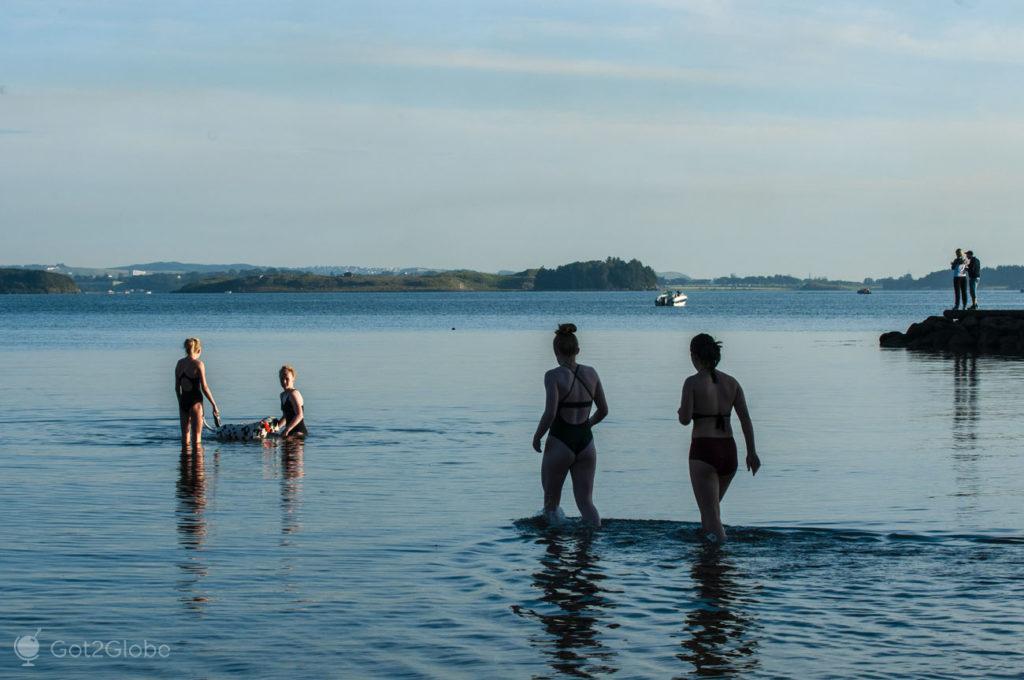
Friends bathe in the shallow, frigid sea of Mollebukta, off Stavanger.
On land, on a lawn dotted with trees, several families and friends picnicked and socialized. Those who, like us, arrived there for the first time, arrived with other purposes.
Hafrsfjord was the scene of a battle of the same name which, in the year 872, allowed the victorious King Harald I to unite all of Norway under his power.
To commemorate the battle, in 1983, the sculptor Fritz Roed drove three ten-metre long bronze swords into a rocky headland. The highest (because placed higher) represents Haroldo. The other two, below, the defeated kings.
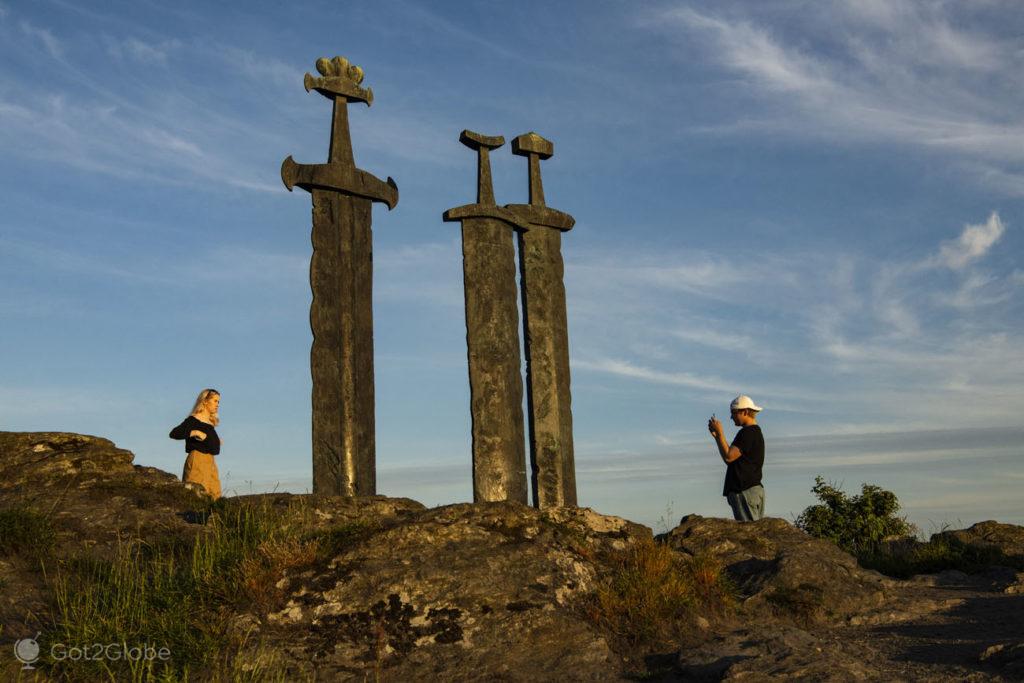
Boyfriends are photographed at the memorial to the Battle of Hafrsfjord.
The monument preserves strong symbolism for the Norwegians and the perspective that everyone yearns for lasting peace, in such a way that the swords were driven into the rock so that this peace would not be disturbed.
About the sunset, Sverd i Fjell, that's how the work is called, it shows itself, strongly photogenic, gilded by the sunset, reflected and somewhat distorted in the water below.
In a sometimes hopeless shift mode, we share it with lovers, groups of friends, visitors and lonely walkers.
We photographed the moments and movements that, among all those fortuitous models, most captivated us. When the pitch sets and chills us for good, we take refuge in the pacified, welcoming and sophisticated core of Stavanger.



